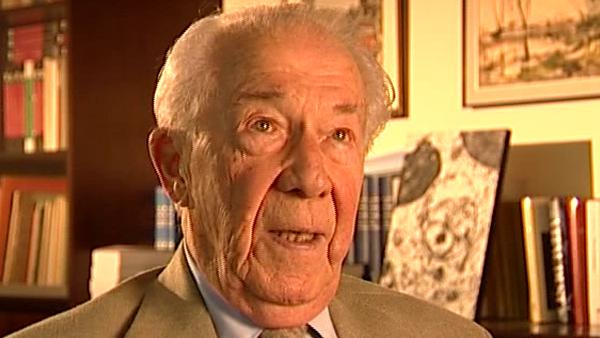NEXT STORY

Pathological implications: The work of Géry Hers
RELATED STORIES

NEXT STORY

Pathological implications: The work of Géry Hers
RELATED STORIES


|
Views | Duration | |
|---|---|---|---|
| 41. The sixth enzyme: Uricase | 157 | 04:50 | |
| 42. The discovery of lysosomes | 1 | 447 | 02:32 |
| 43. A passion for bioenergetics | 128 | 03:06 | |
| 44. Uptake and digestion in lysosomes | 132 | 04:10 | |
| 45. Autophagy: Self-eating by cells | 257 | 03:04 | |
| 46. 'Suicide bags': Lysosomes in pathology | 140 | 02:15 | |
| 47. Pathological implications: Osteoclasts and osteoblasts | 95 | 03:12 | |
| 48. Pathological implications: The work of Géry Hers | 97 | 02:32 | |
| 49. Glycogen storage diseases: Géry Hers and Gerty Cori | 131 | 04:46 | |
| 50. Glycogen storage diseases: Autophagy | 116 | 02:30 |


Another kind of a pathological implication would be if, by any chance, the cells would discharge the contents of their lysosomes outside, in the extra cellular fluid. Now cells don't do that normally. Protozoa do that – that is, single-celled organisms have a mechanism that was described, a century ago or more, as cellular defecation. That is, they digest food in their food vacuoles and then the residues of digestion are simply released into the medium by a mechanism that is also involved in secretion, called exocytosis, and that was originally described as cellular defecation. Now, as I sometimes say, our cells... they cannot defecate, they are chronically constipated, so whatever gets into the lysosomes can’t get out unless it is being broken down. We will see in a minute how important that is. And the reason why they are constipated, I think, is readily explained by natural selection. I have become very involved or very interested in evolution recently and this is a good example of natural selection. Cells that live singly in the ocean or in a pond can afford to discharge the contents of their own lysosomes outside, but cells that live in an organism can't do that, because what they discharge is going to injure collagen fibres and exocellular structures and so on. So that... that explains, at least to me, the state of constipation. But pathologically or sometimes physiologically this kind of mechanism may still be involved, and one of my co-workers here in Belgium, Gilbert Vaes, has spent much of his... well, a good part of his time studying the mechanism of bone remodelling, and bone remodelling involves the destruction of bone tissue by cells called osteoclasts, and the rebuilding of new bone tissue by cells called osteoblasts, and what he found is that osteoclasts actually do secrete the contents of their lysosomes outside. They are not chronically constipated and this acid juice – digestive juice – that they secrete will act to attack the... the structures of the bone tissue, the acid being very useful in dissolving the calcium phosphate, the appetite of the bone.
Belgian biochemist Christian de Duve (1917-2013) was best known for his work on understanding and categorising subcellular organelles. He won the Nobel Prize in Physiology or Medicine in 1974 for his joint discovery of lysosomes, the subcellular organelles that digest macromolecules and deal with ingested bacteria.
Title: Pathological implications: Osteoclasts and osteoblasts
Listeners: Peter Newmark
Peter Newmark has recently retired as Editorial Director of BioMed Central Ltd, the Open Access journal publisher. He obtained a D. Phil. from Oxford University and was originally a research biochemist at St Bartholomew's Hospital Medical School in London, but left research to become Biology Editor and then Deputy Editor of the journal Nature. He then became Managing Director of Current Biology Ltd, where he started a series of Current Opinion journals, and was founding Editor of the journal Current Biology. Subsequently he was Editorial Director for Elsevier Science London, before joining BioMed Central Ltd.
Tags: Gilbert Vaes
Duration: 3 minutes, 12 seconds
Date story recorded: September 2005
Date story went live: 24 January 2008